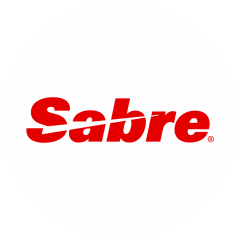If you ask a Product Manager (PM) to describe a typical day at work for them, their first response will be that ‘every day is different!’. Although that response may sound vague, it is true in most cases. There is no ‘typical’ day for product managers as they juggle multiple priorities to find a perfect balance between strategy, technology and execution, without losing focus on the customers needs. Having said that, there are many common themes and standard deliverables that dictate most product managers’ daily routines or schedules.
In this new blog series titled ‘Day In The Life Of A Product Manager’, we are going to talk to different product managers at Sabre Bengaluru, and find out what a typical day looks like for them. To kick things off, we have Sushant Mathur talking about his day.
 Sushant Mathur
Director – Product Management
When we look at Product Management as a role, multiple factors define their typical duties and responsibilities as a Product Manager. These activities vary based on seniority levels, type of industry, specific focus area, among other variables. But If I have to explain my typical day at work, then I can categorize them into 3 major buckets –
Sushant Mathur
Director – Product Management
When we look at Product Management as a role, multiple factors define their typical duties and responsibilities as a Product Manager. These activities vary based on seniority levels, type of industry, specific focus area, among other variables. But If I have to explain my typical day at work, then I can categorize them into 3 major buckets –
I’d like to pass this next to Krishna RKS, to talk about what a typical day looks like for him.
- Engagement (Internal/External) – I spend the majority of my time engaging with various stakeholders from different job functions, i.e. strategy, engineering, sales and product marketing, to understand the customer feedback regularly.Another key objective is to ensure that there is no disconnect or gaps in the product priorities and our short, mid and long term strategic vision is well articulated and understood by all key stakeholders. Also, as a product manager, another key aspect for me is ensuring that communication is not just one-way and that I continue to leverage the collective expertise of all key teams to ensure we are building the right solutions and collecting all data points to make the right decisions.
- Communicating With Stakeholders: Peter Drucker once said, “the most important thing in communication is hearing what isn’t” After all, the important and difficult job is not to find the right answer, it is to find the right question. So, asking the right questions as a product manager helps me find the right answers to brainstorm, prioritize and finalize the roadmap and make key product decisions.This requires me to be part of several scheduled product management meetings along with many ad hoc (and impromptu) meetings. These meetings provide me with good clarity about customer pain points, areas of focus and weaves these learnings into everything we do as product managers to develop products successfully for our customers.
- Research, Analysis and Planning: I spend a good amount of my time every day analyzing metrics, market trends, competitive research, reviewing the product roadmap, and preparing for customer meetings and demos. This provides me with all the required details to build a solid runway for my products along with finding the potential opportunities to run experiments around customers’ needs. I also plan to use these data points to generate new ideas and opportunities to build creative solutions for common customer challenges.
I’d like to pass this next to Krishna RKS, to talk about what a typical day looks like for him.

